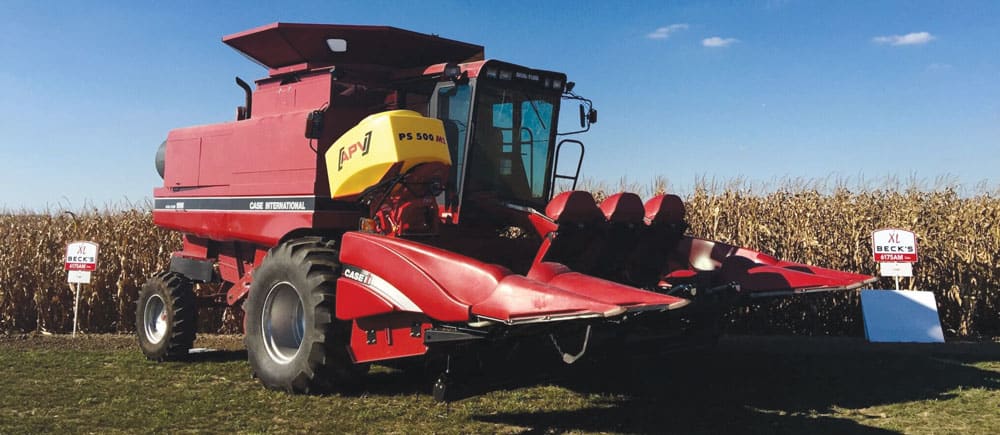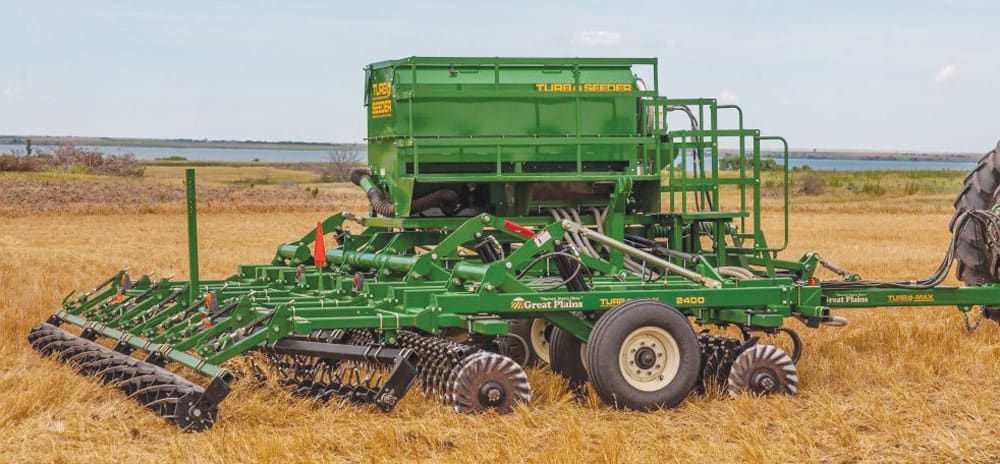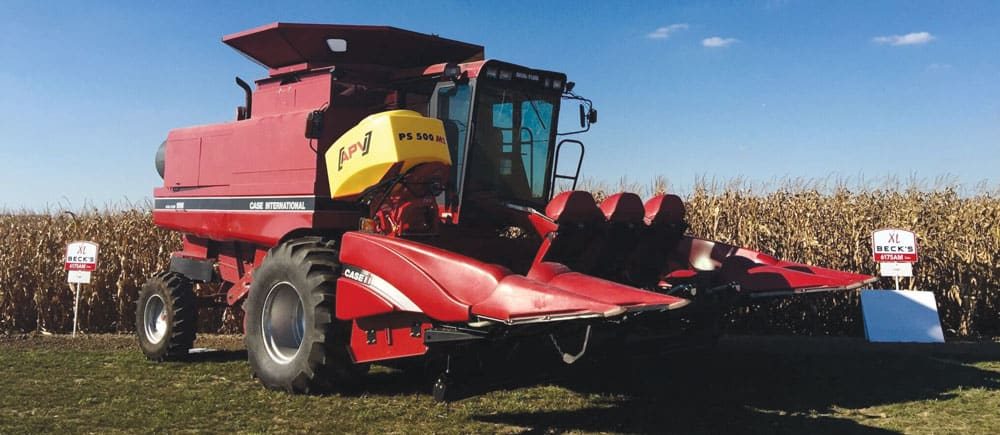Since 2012, when annual surveys began tracking adoption rates for the use of cover crops in U.S. agriculture, all signs point to steady growth in the practice as growers search for ways to reduce farm inputs and erosion and improve water infiltration in their fields.
New studies show enhanced soil biological activity linked with cover crop use is a key component of regenerating sagging soil organic matter levels in many fields. Those findings also have many growers excited about using covers to improve their long-term bottom line.
When the Conservation Technology Information Center (CTIC) and USDA’s Sustainable Agriculture Research & Education (SARE) granting program first surveyed cover crop use, it was estimated American farmers had planted about 10 million acres in cover crops in 2012, and by 2020 that figure would be close to 20 million acres across the country. By 2016, survey respondents reported they were growing an average of 400 acres of cover crops each, compared with 217 acres in 2012, and estimates for 2017 pegged that growth to climb to 451 acres per respondent — indicating substantial year-on-year acreage gains.
Since the benchmark surveys of 2012, manufacturers such as APV-America, Dawn Equipment, Great Plains Mfg., Gandy Mfg., Hagie Mfg., Montag Mfg. and Salford Equipment, have worked with growers to provide equipment to successfully establish cover crops in a host of scenarios that seem to vary with each farm operator involved.

A simple broadcast spinner or pneumatic seeder mounted on a combine such as this PS500M2 from APV-America can distribute cover crop seeds as a cash crop is being harvested. Photo Courtesy of APV-America
“Cover crops are an emerging market and we still don’t know what that market will look like in 5 years,” says Anthony Montag, president of Montag Mfg., Milton, Neb. “We know there are solid benefits from using cover crops and they are being adapted rapidly because of their positive effects on water quality, erosion control and soil health.
“I just attended a meeting of the Iowa Ag Alliance, which estimates there were 800,000 acres of cover crops being used in Iowa alone in 2017. Eventually, the organization’s goal is to see that number rise to 12 million acres across the state,” he explains. “We’re still on the cutting edge of this movement and as additional growers see the benefits, the growth in cover crop acres will continue.”
Tools for establishing cover crops run the gamut from simple spinner broadcasters and pneumatic seeders mounted on tractors, combines, strip-till and vertical tillage machines, to high-clearance seeders with drop tubes for interseeding between corn and soybean rows, on to dedicated drills and air seeders. In many cases, growers continue to hire cover-crop mixtures to be flown on with aircraft.
Every Farm is Different
Cover crop establishment methods vary widely according to geography, local climatic conditions, a farmer’s cropping system, soil type, labor availability and an array of other considerations. There’s no one-size fits all system or tool, and equipment makers are striving to provide basic machines that can be used in various situations.
Montag, whose company builds the Fortifier — a cooperative project with Hagie Mfg. which equips a high-clearance sprayer with a 90-120-foot pneumatic boom and drop tubes for interseeding covers between corn rows — says machine design is following geographically-based farm needs.
“In Nebraska cover cropping tends to be focused on wind erosion and grazing,” he explains. “Moving into Iowa, however, you see much more of an environmental focus for nutrient scavenging. Ohio is similar to Iowa, but there’s more rain pressure where people are concerned with water erosion and having a winter cover. Regardless of where you are, however, you’ll likely find nutrient management and erosion are the prime factors of interest in cover crops.”
Jim Boak of Salford Group agrees erosion control and water quality are top of the ticket in getting grower votes to adapt cover crops, but he says improving net farm income, reducing dependency on purchased inputs, improving soil health and maximizing photosynthesis harvest are also driving the movement.

Salford’s AC2000 air cart can handle up to three options with each being metered separately, giving growers an opportunity to plant multiple cover crop species with accompanying fertilizer. Photo Courtesy of Salford Group
Salford builds an extensive range of precision applicators, incorporators and commodity delivery systems.
“Interest in cover crops varies regionally according to climate and crop rotations,” Boak says. Also, he cites environmental concerns for crop nutrients finding their way into water supplies as a big driver of cover crop use, particularly in the Great Lakes and Chesapeake Bay regions, and more recently in the Mississippi Delta.
“These inputs are bought and paid for, and no producer wants to see them wasted in a water supply,” he explains. “The final solution is vastly improved moisture management and if we shift more attention to stopping runoff and erosion, we stop the nutrient loading of the water supply in its tracks.”
Boak says growers are rapidly learning about the various species of cover crops and mixtures, and he predicts the industry will quickly learn more about the ability to double-crop covers with cash crops and that will drive the equipment market forward quickly.
“So far, adoption of this technology has been slower than I would have expected, but we’ve seen it accelerate over the past 2 years,” he says. “Producers are still learning the ropes, but they’re learning fast about the benefits of keeping the soil covered.”
Farmer-to-Farmer Cover Crop Tips
Cover crop use largely became popular in the northeastern U.S. where growers adopted the practice to combat erosion-induced runoff of crop protectants and soil nutrients. Over time, the Pennsylvania No-Till Alliance compiled tips and educational material to help growers adapt no-till methods and the use of cover crops.
Some of the wisdom of that effort is reflected in the following compilation of farmer-to-farmer suggestions for successfully getting started with cover crops:
- Keep it simple and cheap in getting started. Cereal rye is a good beginning cover crop choice. You can expand your multi-species choices as you become more familiar with your circumstances.
- Consult with other local farmers who are using cover crops to see what is working for them and ask them about their good and bad results.
- Make a plan to establish cover crops and be intentional in carrying it out. It won’t happen if you wait “until you have some extra time.”
- The earlier you plant cover crops the better results you will have. Plant shorter season cash crops to maximize the cover crop planting window in the fall.
- Don’t let thick residue such as corn stover prevent you from establishing a cover crop. Covers can actually help in decomposing remaining field residue.
- Choose a weed control program that is compatible with the planned cover crop. Avoid long-residual herbicides.
- Make certain you have planned how to terminate cover crops in the spring. Do not let them overgrow because they can complicate planting, rob moisture from the spring crop and shade seedlings of the cash crop.
- Remember that soil is the plant’s stomach. Feed the soil and you feed the plant.
- Expect failures and surprises. Never give up.
For 10 years, Justin Landeck has watched the cover crop movement evolve from his position with Dawn Equipment, the maker of crimper-rollers, multi-purpose openers, and closing systems for seeding cover crops. The company has seen growth in the organic market as well as increasing sales to cotton growers.
“At first it was mainly used by those interested in soil health, but now we see growers interested in using covers to reduce their overall farming inputs,” he explains.
Landeck says as interest grows in covers, it’s a struggle for equipment designers to size equipment to larger operations.
“For instance, when it comes to our ZRX crimper, as cover crops expand to larger farming operations, we have to adapt our equipment to larger planters, plus have those planters set up correctly to be able to plant in a wide variety of crop residue. Getting bigger means the growth stage of the cover crop at planting becomes vitally important.”
Dawn Equipment also has a new staggered double-disc opener called the Duoseed, which allows growers to interseed or plant a cover crop during a traditional corn sidedressing operation in the V4-V6 range. In the fall, the Duoseed can be used for planting cover crops at various row spacing for the following season.
At APV-America Inc., Austin Hawkins says his company is striving to give growers the tools to thoroughly seed their ground efficiently with cover-crop mixtures with no skips or gaps.
APV-America has expanded its long-time spinner-spreader line to include pneumatic seeders mounted on various implements such as harvesters, tine harrows and roller-packers — with the express intent of ensuring thorough cover crop seeding coverage and good seed-to-soil contact.
“If a farmer is not getting adequate coverage with whatever they are using to seed covers, they are not fully retaining moisture and their cover crop canopy is not adequately covering the ground to prevent weed growth,” Hawkins explains. “Our spreaders and pneumatic seeders are designed to apply cover crops efficiently with precision and speed.
“This efficiency is becoming more important to U.S. growers,” he explains. “Cover crops are not a new idea, it’s just that many conventional farmers in the U.S. did not accept or believe they were beneficial until recently.
“There have been organic farmers using cover crops for years to manage soil moisture and gain organic matter without adding fertilizer. Conventional farmers are just now taking notice.”
Hawkins says his company’s products are designed to level, harrow and apply seed evenly and then roll it all in one pass, to get the vital seed-to-soil contact necessary for thorough and widespread cover crop emergence.
“A lot of acres are still flown on, but those applications usually lack adequate coverage for the most beneficial use of the cover crops,” he explains.
Questions to Ask
Cover crops can be seeded at different times during the year and by no-till drilling, precision planting and broadcasting with incorporation. Each method has its advantages and limitations, but growers have to find a method best-suited for their individual operation’s goals for cover crop use.
Great Plains Mfg., which has seen significant interest in its seeding attachment for use with its Turbo-Max vertical tillage machine, has compiled a useful set of tips and guidelines for various cover-crop seeding methods. It begins with the following questions:
- What is your planting window?
As a general rule, many agronomists suggest cover crops should have a minimum of 4-6 weeks growing time to justify the time and expense in their planting, although late planting may still offer some protection against erosion.
- What equipment do you already own?
The drill, planter or vertical tillage equipment you own will become even more productive if you use it to seed cover crops. Your precision planter or no-till drill can accurately seed cover crops with only a few minor adjustments. Also, you could consider broadcasting and incorporating cover-crop mixtures with an existing vertical tillage tool. Experiment to see what method works best for your operation.
Seeding Methods/Tips
Precision Planter
One of the best ways to ensure consistent seed spacing and depth control is to use a precision planter to seed cover crops after a cash crop has been harvested. For even coverage, twin-row or narrow-row planters work best.

Great Plains Mfg. has added its Turbo-Seeder attachment to its Turbo-Max and earlier vertical tillage machines to spread and incorporate cover crops seed for maximum seed-to-soil contact and enhanced early stand emergence. Photo Courtesy of Great Plains Mfg.
Planters require 10-50% less seed than other methods because individual seeds are metered and precisely placed in the ground. This method provides for excellent seed-to-soil contact, especially for mixes, and it boosts the chance for success in the final days of the seeding period because rainfall is not critical for germination behind a precision planter.
Tips include:
- Be certain you refer to the owner’s manual to calibrate the planter for the size of seed being planted.
- Consult the planting guide for additional parts and equipment (brushes, seed plates, cup holders, etc.) needed for your planting project.
- Consider planting earlier-maturing cash crops to leave adequate time for establishing a cover crop.
No-Till Drill
Because they are designed to plant into heavy cover, no-till drills are a widely-accepted method for seeding covers directly in crop stubble after a cash crop is harvested.
Studies show cover crops planted with a no-till drill often results in better stands and maximized cover crop benefits. With accurate metering, distribution, depth, spacing and placement of seed, no-till drills offer uniform seed placement and good seed-to-soil contact for quick, consistent emergence.
Drilled cover crops generally use less seed than broadcasting and can produce more dense stands more quickly than other methods, which helps with weed suppression.
Tips include:
- Drill depth is critical, especially for small seeded crops. When drilling mixtures, consider the goals for the cover crop and set the drill depth for the species that will best address those needs.
- Calibrate the drill according to the owner’s manual for proper seeding rates.
- Consider growing earlier-maturing cash crops to allow adequate time for cover crop establishment at the end of the season.
- Avoid drilling cover crops in wet soil.

The new Fortifier from Montag Mfg. and Hagie Mfg., matches a 90-120-foot pneumatic boom and a high-clearance sprayer chassis to make an interseeder capable of distributing cover crop mixtures between corn rows early in the season. Photo Courtesy of Montag Mfg.
Broadcasting
Cover crops can be broadcast onto a field, followed by light tillage to incorporate. Or, seed can be spread and incorporated with a seeder mounted directly on harvesting or vertical tillage equipment. Regardless, shallow incorporation after broadcast seeding helps improve cover crop stands.
Broadcast seeding with vertical tillage equipment offers a one-pass operation that is often faster than other methods, as many vertical tillage machines are designed to operate at high field speeds. The method provides excellent seed-to-soil contact, and studies have shown broadcasting small grains with vertical tillage incorporation produces establishment rates similar to those of drilling.
Broadcast seeding generally requires 10-20% higher seeding rates than drilled rates.
Tips include:
- Adequate soil moisture is necessary for top performance of broadcast and incorporated cover crop seed.
- Varying seed size in cover-crop mixes can result in uneven stands, so monitoring for even distribution is critical.
- Be sure seed is not buried too deep.
- Run straight coulters on vertical tillage equipment. Avoid cupped or concave blades, which invert the soil and tend to bury the crop too deeply.






Post a comment
Report Abusive Comment